Welcome to The Subtle Shift, a weekly newsletter where I share small but powerful ideas to help you lead with clarity, inspire change, and create a lasting impact. This week, I want to talk about a productivity trap that’s easy to fall into—one that tricks us into thinking we’re effective when we’re actually just spinning our wheels.
The Illusion of Productivity
I was recently listening to Cal Newport’s Deep Questions podcast, where he talked extensively about pseudo-productivity—the illusion that we are productive when, in reality, we’re just busy.
His insights hit me hard.
Because the truth is, I’ve fallen into this trap, too. And I see it everywhere—especially in leadership teams drowning in meetings, emails, and instant messages but struggling to make real progress.
We tell ourselves we’re being productive because we’re doing things. We answer emails quickly. We attend every meeting. We check off small tasks.
But here’s the hard truth: None of that necessarily means we’re producing meaningful work.
As leaders, we must wake up to this before we can hope to help our teams escape the same illusion.
The Assumptions That Keep Us Trapped
The illusion of productivity doesn’t just happen. It results from subtle but dangerous assumptions about what it means to be effective. Here are three big ones:
1. “If I’m busy, I’m productive.”
The busier we are, the more productive we feel. However, activity is not the same as impact. We can fill every hour with work and still not move the needle on what truly matters.
2. “The more tasks I complete, the more successful I am.”
Checking off boxes feels good, but success isn’t about how many tasks you finish—it’s about whether you’re working on the right tasks.
3. “Immediate responsiveness equals effectiveness.”
We convince ourselves that being available 24/7 makes us indispensable. But constantly reacting to emails, messages, and meetings pulls us away from the deep, strategic work that actually drives results.
When we believe these things, we get lost in the illusion of pseudo-productivity—mistaking motion for progress, busyness for effectiveness, and responsiveness for leadership.
So how do we escape?
By making subtle shifts in our attention and our assumptions.
Escaping the Illusion: What to Focus On Instead
The key to real productivity isn’t doing more. It’s focusing on what truly matters.
Shift Your Attention (Where You Focus)
- From Shallow Work → To Deep Work
- Protect time for high-impact work that requires focus. Block out distractions. Turn off notifications. Train your team to respect focus time.
- From Being Available → To Being Intentional
- Stop reacting to every ping and email. Set clear expectations for response times. Create boundaries around when and how you communicate.
- From Task Completion → To Strategic Impact
- Prioritize leverage points—the few key actions that will create the most significant results. Let go of low-value tasks or delegate them.
Shift Your Assumptions (How You Think)
- From “Fast work is good work” → To “Thoughtful work is good work”
- Slowing down often leads to better decisions and higher-quality results. Stop equating speed with effectiveness.
- From “Saying yes shows commitment” → To “Saying no protects my best work.”
- The best leaders don’t say yes to everything. They fiercely protect their time so they can focus on what truly matters.
- From “If it feels like work, it must be important” → To “If it moves the needle, it’s important.”
- Not all effort is equal. Some tasks feel like work but don’t actually matter. Focus on what creates impact, not just activity.
Leadership Starts with Us
If we want our teams to escape the illusion of pseudo-productivity, we must break free first. We must question our assumptions about productivity and focus on impact instead of activity.
Most of all, we need to recognize that authentic leadership isn’t about doing more—it’s about creating the conditions for meaningful work to happen.
Let’s stop mistaking busyness for progress. Let’s lead by example.
If this message resonates with you, forward it to someone who needs to hear it. And if you haven’t yet, join the community by subscribing to The Subtle Shift.
Until next time—keep making those subtle shifts.

